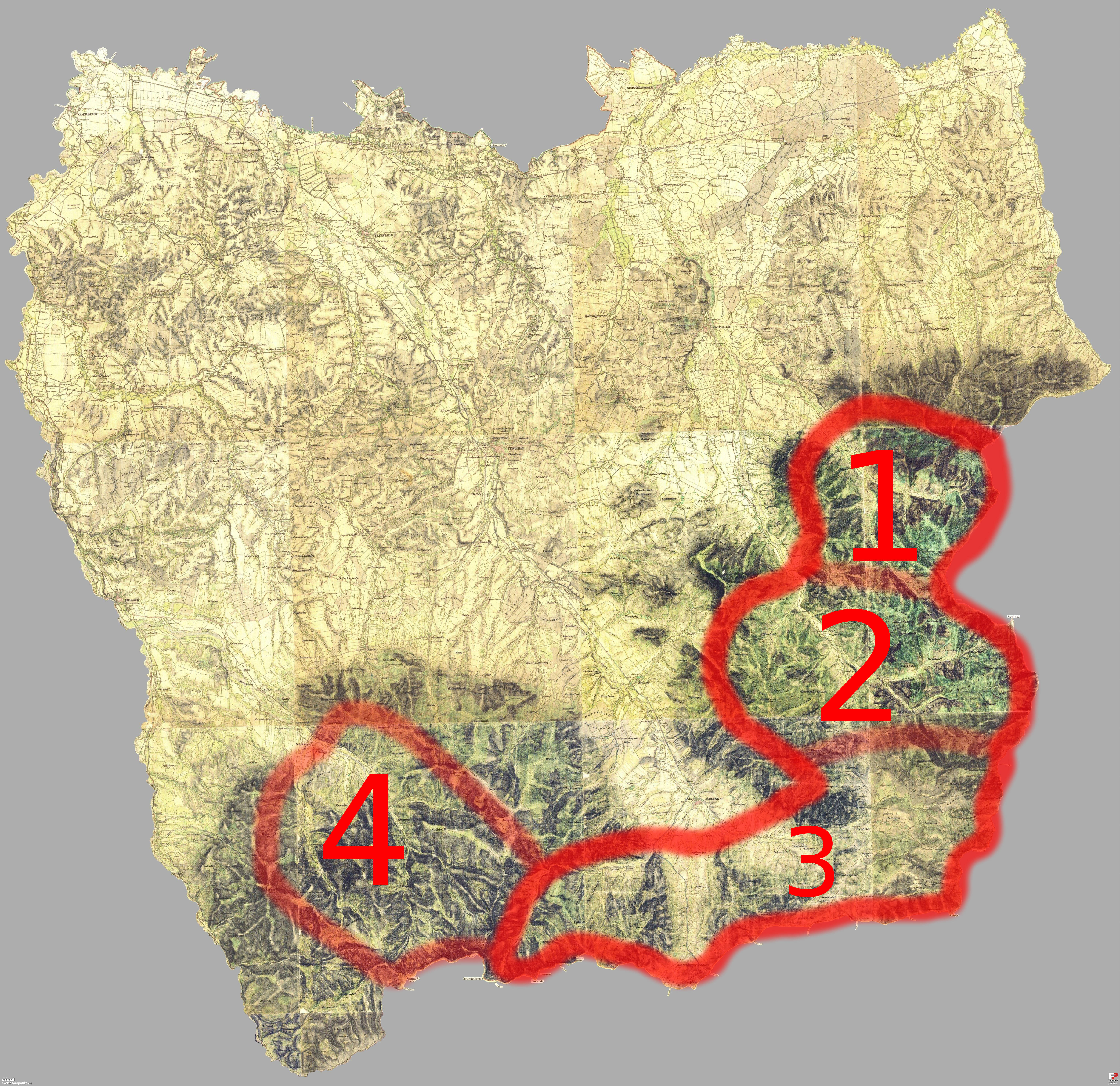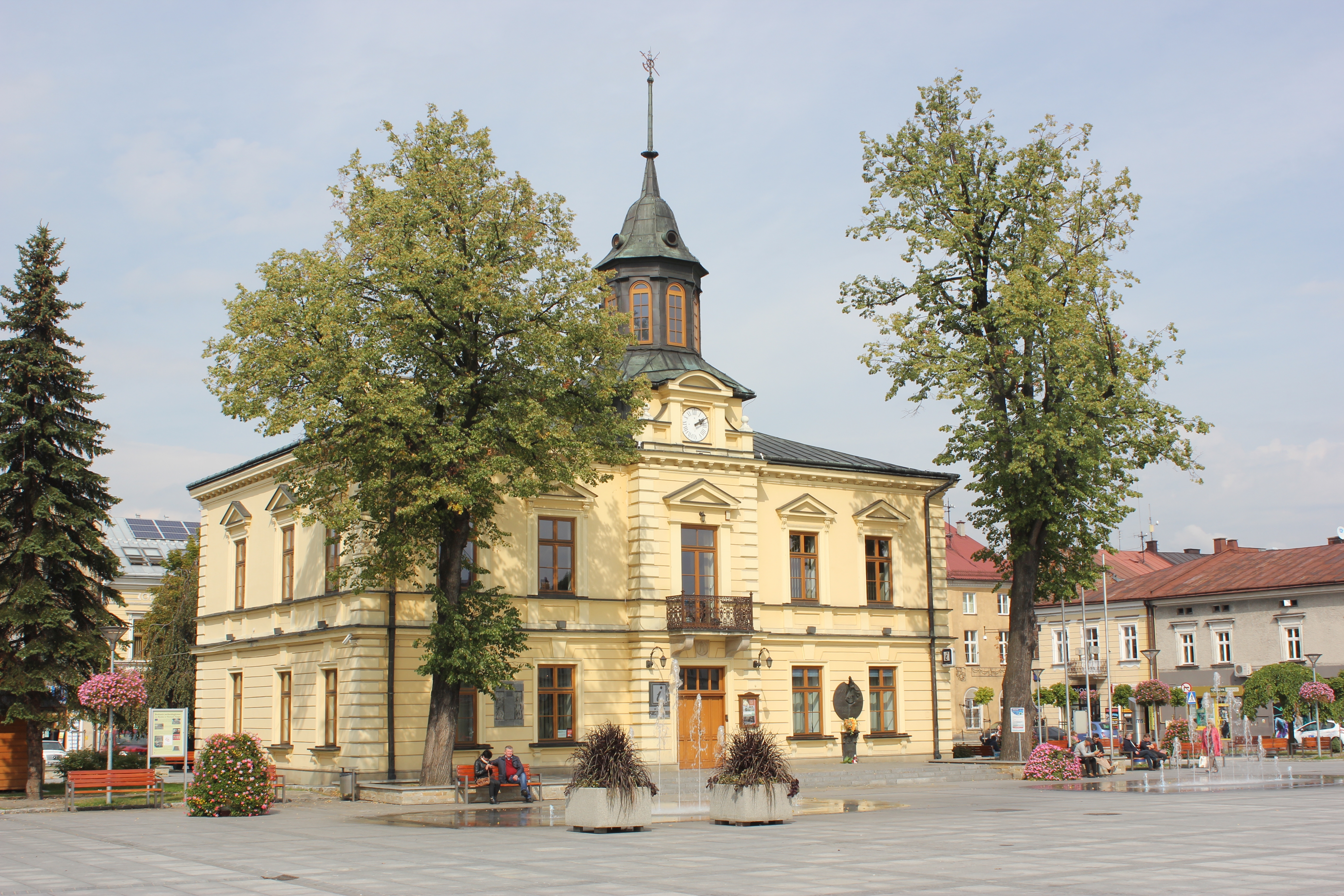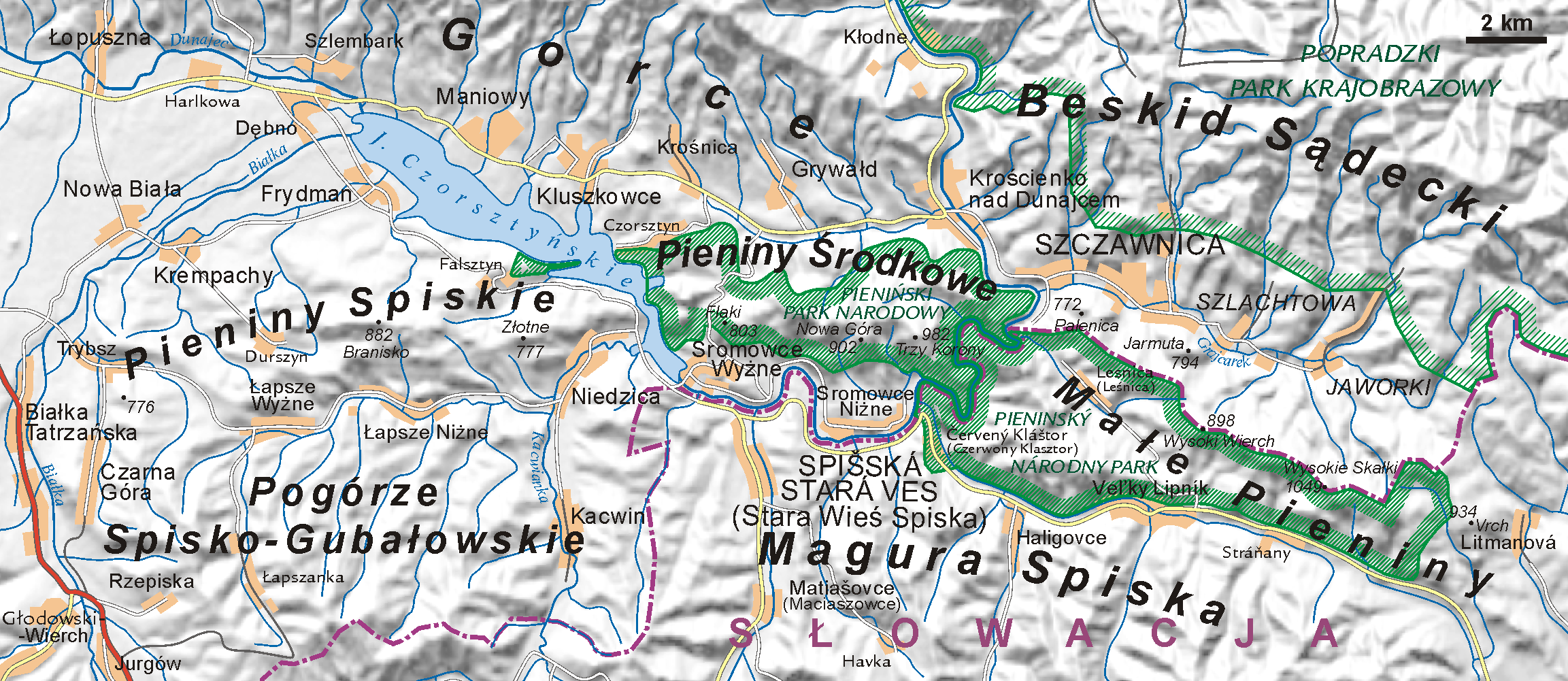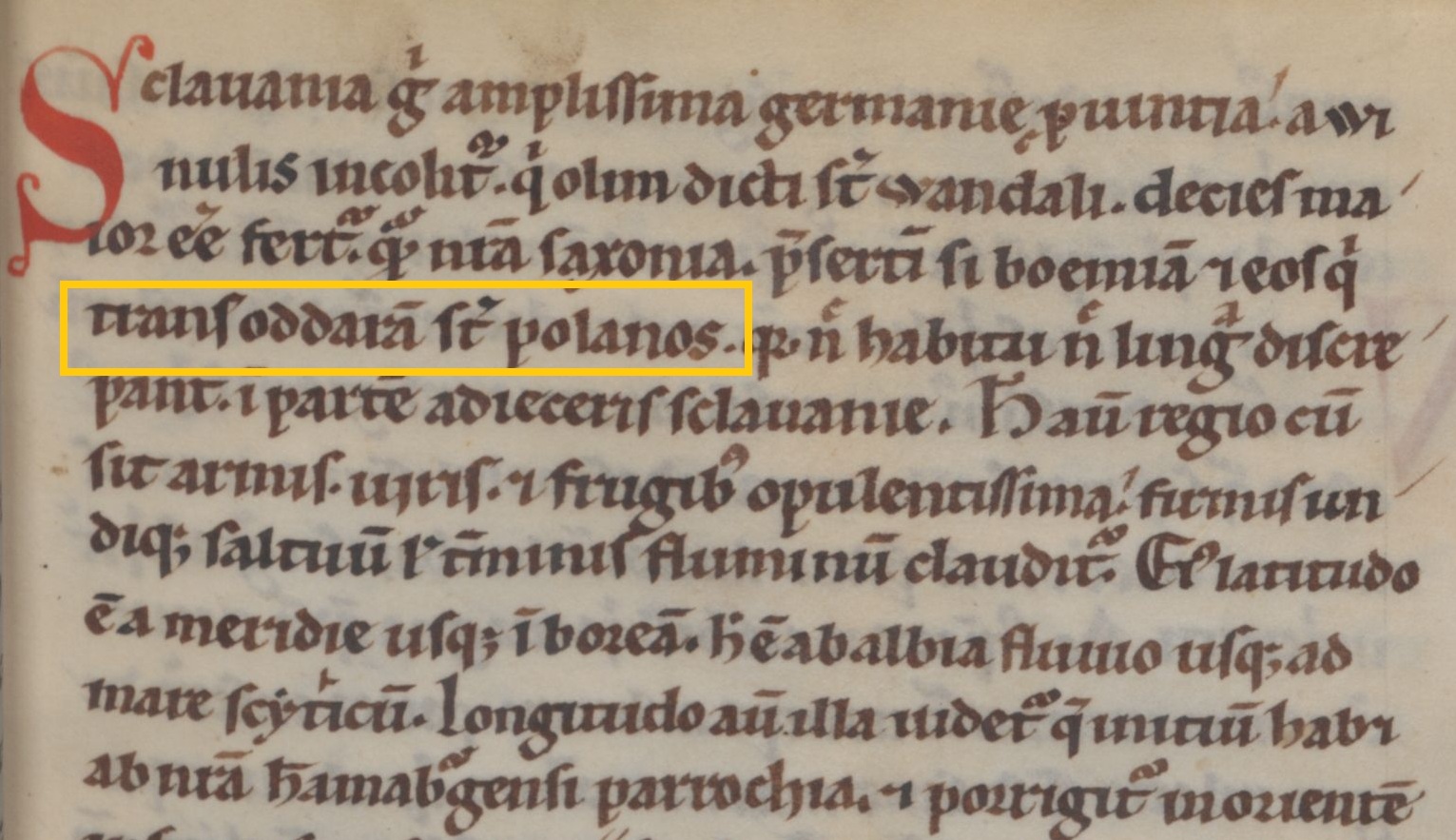|
Gorals
The Gorals (; Goral ethnolect: ''Górole''; ; Cieszyn Silesian dialect, Cieszyn Silesian: ''Gorole''), also anglicized as the Highlanders, are an ethnographic group with historical ties to the Vlachs. The Goral people are primarily found in their traditional area of southern Poland, northern Slovakia – especially Orava (region), Orava, Spiš and Zamagurie, and in the region of Cieszyn Silesia in the Czech Republic, where they are known as the Silesian Gorals. There is also a significant Goral diaspora in the area of Bukovina in western Ukraine and northern Romania, as well as in Chicago which is the seat of the Polish Highlanders Alliance of North America. History The Gorals as a separate ethnographic subgroup began to form in the 14th century with the arrival of the first Polish People, Polish settlers from Lesser Poland, who would settle and farm the lands around what is today Nowy Targ and along the Dunajec valley beginning in the early twelve hundreds. Prior to that, Podhal ... [...More Info...] [...Related Items...] OR: [Wikipedia] [Google] [Baidu] |
Silesian Gorals
Silesian Gorals are a subgroup of the Gorals living in the Silesian Beskids and Moravian-Silesian Beskids within the historical region of Cieszyn Silesia. They are one of the four major ethnographic groups of Cieszyn Silesia. History Vlach colonization of the Silesian Beskids began in the late 15th century, roughly around the time when Brenna was first mentioned in 1490. It peaked in the following two centuries. The group shares many cultural traits with other Gorals of the Western Carpathians, stemming from a common way of living from shepherding in mountainous pastures, but they are also characterised by various different cultural and spiritual elements like dialect, beliefs, customs, costume, etc. Wincenty Pol in his survey of Gorals in the middle of the 19th century subdivided Silesian Gorals into four groups: * Breniacy – in Brenna. * Wiślanie – in Wisła. * Jabłonkowianie (Jablunkov Gorals) – in mountain villages around Jablunkov (Polish: Jabłonków) including ... [...More Info...] [...Related Items...] OR: [Wikipedia] [Google] [Baidu] |
Podhale
Podhale (; ), sometimes referred to as the Polish Highlands, is Poland's southernmost region. The Podhale is located in the foothills of the Tatra range of the Carpathian Mountains. It is the most famous region of the Goral Lands which are a network of historical regions inhabited by Gorals. Local folklore The region is characterized by its unique folklore, which is distinct from other folk cultures in Poland. Its folklore was brought there mainly by settlers from the Lesser Poland region further north and partly by Wallachian (Vlach) settlers in the centuries during their migrations. The name Podhale literally translates as "below the mountains" in English. It is a combination of two words. In the Gorals dialect, the Alpine tundra is called hala (plural: hale), "pod" in Polish is the English "under". The Podhale dialect of Polish as well as standard Polish are spoken in the region. Regional attractions Among the region's attractions are the popular mountain resort ... [...More Info...] [...Related Items...] OR: [Wikipedia] [Google] [Baidu] |
Nowy Targ
Nowy Targ (Officially: ''Royal Free city of Nowy Targ'', Yiddish: ''Naymark'', Gorals, Goral dialect: ''Nowy Torg'' ) is a town in southern Poland, in the Lesser Poland Voivodeship. It is located in the Orava-Nowy Targ Basin at the foot of the Gorce Mountains, at the confluence of the Czarny Dunajec (river), Czarny Dunajec and the Biały Dunajec (river), Biały Dunajec. It is the seat of the Nowy Targ County and the rural Gmina Nowy Targ, as well as the Tatra Euroregion. With 33,293 inhabitants, Nowy Targ is the largest town and the historic capital of Podhale, as well as its main commercial, communication and industrial center. The town has the Podhale State Vocational University in Nowy Targ, Podhale State Vocational University and the Nowy Targ Airport, highest located airport in Poland. Established before 1233, Nowy Targ received city rights on 22 June 1346 from King Casimir III the Great, Casimir the Great. The historic architectural and urban complex of the town with a Mar ... [...More Info...] [...Related Items...] OR: [Wikipedia] [Google] [Baidu] |
Lesser Poland
Lesser Poland, often known by its Polish name ''Małopolska'' (; ), is a historical region situated in southern and south-eastern Poland. Its capital and largest city is Kraków. Throughout centuries, Lesser Poland developed a separate culture featuring diverse architecture, folk costumes, dances, cuisine, traditions and a rare Lesser Polish dialect. The region is rich in historical landmarks, monuments, castles, natural scenery and UNESCO World Heritage Sites. The region should not be confused with the modern Lesser Poland Voivodeship, which covers only the southwestern part of Lesser Poland. Historical Lesser Poland was much larger than the current voivodeship that bears its name. It reached from Bielsko-Biała in the southwest as far as to Siedlce in the northeast. It consisted of the three voivodeships of Kraków, Sandomierz and Lublin. It comprised almost 60,000 km2 in area; today's population in this area is about 9,000,000 inhabitants. Its landscape is mai ... [...More Info...] [...Related Items...] OR: [Wikipedia] [Google] [Baidu] |
Polish Highlanders Alliance Of North America
The Polish Highlanders Alliance of America ( pl. ''Związek Podhalan w Ameryce Północnej'') was founded in 1929 in Chicago as an organization that unites all other Góral organizations in the United States. Most of Chicago's Góral community is concentrated on Chicago's Southwest Side along Archer Avenue where the headquarters, also known as the "Highlander Home" ("Dom Podhalan" in Polish) is located. The Highlander House is styled as a Carpathian chalet in the traditional Zakopane Style of Architecture. Located at 4808 S. Archer Avenue in Chicago, the structure underwent renovation under the eye of famed artist Jerzy Kenar in 2005. In 2012 the Highlander House was upgraded with state of the art audio and video equipment. The Polish Highlanders Alliance of North America is a nonprofit organization run by an executive board. The members of the current (voted September 2024) board are: ::Jan Krol - president ::Marzena Kostelic Predki - vice president ::Wieslaw Siuta- vice p ... [...More Info...] [...Related Items...] OR: [Wikipedia] [Google] [Baidu] |
Spiš
Spiš ( ; or ; ) is a region in north-eastern Slovakia, with a very small area in south-eastern Poland (more specifically encompassing 14 former Slovak villages). Spiš is an informal designation of the territory, but it is also the name of one of the 21 official tourism regions of Slovakia. The region is not an administrative division in its own right, but between the late 11th century and 1918 it was an administrative county of the Kingdom of Hungary (see separate article Szepes County in this regard). Etymology The name is probably related to the appellative ''spiška'', ''špiška'' known from Slovak (Eastern Slovakia and Orava) and Moravian dialects ( Haná) - a (cut) stick, a piece of wood or sugar, etc. Old Slavic ''pьchjati'', ''pichjati'' - to stab, to cut → prefixed form sъ-pich-jь → after palatalization and extinction of yers ''spiš''. Spiš probably means "a cut forest". The theory is supported also by the fact that almost all early Latin documents ment ... [...More Info...] [...Related Items...] OR: [Wikipedia] [Google] [Baidu] |
Zamagurie
Zamagurie (in Slovak, ; ) is a region in the Goral Lands area in the north of the Spiš region, between the Spišská Magura in the south, the Dunajec river in the north and the Białka (Slovak: ''Biela voda'') river in the west. It is divided between the Prešov Region of Slovakia and the Lesser Poland Voivodeship of Poland and is further divided between the Slovak districts of Stará Ľubovňa and Kežmarok and Polish gminas of Bukowina Tatrzańska, Nowy Targ and Łapsze Niżne. The centre of the region is the Slovak town Spišská Stará Ves, which is just near the border. The region also used to be one of the official tourist regions of Slovakia until 2004. In 2006, a new border bridge for pedestrians was open between Červený Kláštor and Sromowce. Tourist attractions The most popular tourist attraction are the Pieniny mountains with the Dunajec river gorge, with floating trips on wooden canoes bound into rafts, hikes to the Trzy Korony or Sokolica hills. Among the ... [...More Info...] [...Related Items...] OR: [Wikipedia] [Google] [Baidu] |
Polish People
Polish people, or Poles, are a West Slavic ethnic group and nation who share a common History of Poland, history, Culture of Poland, culture, the Polish language and are identified with the country of Poland in Central Europe. The preamble to the Constitution of the Republic of Poland defines the Polish nation as comprising all the citizenship, citizens of Poland, regardless of heritage or ethnicity. The majority of Poles adhere to Roman Catholicism. The population of self-declared Poles in Poland is estimated at 37,394,000 out of an overall population of 38,512,000 (based on the 2011 census), of whom 36,522,000 declared Polish alone. A wide-ranging Polish diaspora (the ''Polish diaspora, Polonia'') exists throughout Eurasia, the Americas, and Australasia. Today, the largest urban concentrations of Poles are within the Warsaw metropolitan area and the Katowice urban area. Ethnic Poles are considered to be the descendants of the ancient West Slavic Lechites and other tribes t ... [...More Info...] [...Related Items...] OR: [Wikipedia] [Google] [Baidu] |
Cieszyn Silesian Dialect
The Cieszyn Silesian dialect or Teschen Silesian dialect (Cieszyn Silesian: ''cieszyńsko rzecz''; or '; ; Silesian: ''ćeszyński djalekt'') is one of the Silesian dialects. It has its roots mainly in Old Polish and also has strong influences from Czech and German and, to a lesser extent, from Vlach and Slovak. It is spoken in Cieszyn Silesia, a region on both sides of the Polish-Czech border. It remains mostly a spoken language. The dialect is better preserved today than traditional dialects of many other West Slavic regions.Hannan 1996, p. 191 On the Czech side of the border (in Trans-Olza) it is spoken mainly by the Polish minority, where it was and still is strongly influenced mainly by Czech (mainly lexicon and syntax). It is used to reinforce a feeling of regional solidarity. Polish and Czech linguists differ in their views on the classification of the dialect. Most Czech linguists make a distinction between the dialect as spoken in Czechia and in Poland, and class ... [...More Info...] [...Related Items...] OR: [Wikipedia] [Google] [Baidu] |
Carpathian Mountains
The Carpathian Mountains or Carpathians () are a range of mountains forming an arc across Central Europe and Southeast Europe. Roughly long, it is the third-longest European mountain range after the Ural Mountains, Urals at and the Scandinavian Mountains at . The highest peaks in the Carpathians are in the Tatra Mountains, exceeding , closely followed by those in the Southern Carpathians in Romania, exceeding . The range stretches from the Western Carpathians in Austria, the Czech Republic, Slovakia and Poland, clockwise through the Eastern Carpathians in Ukraine and Romania, to the Southern Carpathians in Romania and Serbia.About the Carpathians – Carpathian Heritage Society [...More Info...] [...Related Items...] OR: [Wikipedia] [Google] [Baidu] |
Cieszyn Silesia
Cieszyn Silesia, Těšín Silesia or Teschen Silesia ( ; or ; or ) is a historical region in south-eastern Silesia, centered on the towns of Cieszyn and Český Těšín and bisected by the Olza River. Since 1920 it has been divided between Poland and Czechoslovakia, and later the Czech Republic. It covers an area of about and has about 810,000 inhabitants, of which (44%) is in Poland, while (56%) is in the Czech Republic. The historical boundaries of the region are roughly the same as those of the former independent Duchy of Teschen, Duchy of Cieszyn. Currently, over half of Cieszyn Silesia forms one of the euroregions, the Cieszyn Silesia Euroregion, with the rest of it belonging to Euroregion Beskydy. Administrative division From an administrative point of view, the Polish part of Cieszyn Silesia lies within the Silesian Voivodeship and comprises Cieszyn County, the western part of Bielsko County, and the western part of the town of Bielsko-Biała. The Czech par ... [...More Info...] [...Related Items...] OR: [Wikipedia] [Google] [Baidu] |
Polish People
Polish people, or Poles, are a West Slavic ethnic group and nation who share a common History of Poland, history, Culture of Poland, culture, the Polish language and are identified with the country of Poland in Central Europe. The preamble to the Constitution of the Republic of Poland defines the Polish nation as comprising all the citizenship, citizens of Poland, regardless of heritage or ethnicity. The majority of Poles adhere to Roman Catholicism. The population of self-declared Poles in Poland is estimated at 37,394,000 out of an overall population of 38,512,000 (based on the 2011 census), of whom 36,522,000 declared Polish alone. A wide-ranging Polish diaspora (the ''Polish diaspora, Polonia'') exists throughout Eurasia, the Americas, and Australasia. Today, the largest urban concentrations of Poles are within the Warsaw metropolitan area and the Katowice urban area. Ethnic Poles are considered to be the descendants of the ancient West Slavic Lechites and other tribes t ... [...More Info...] [...Related Items...] OR: [Wikipedia] [Google] [Baidu] |










